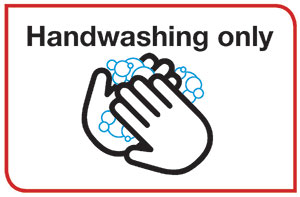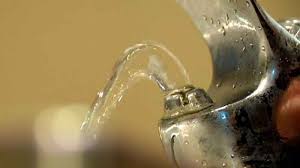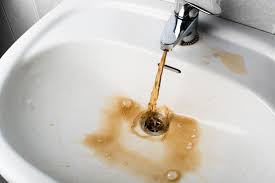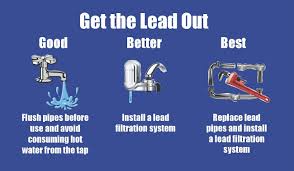Samples are collected between May 1 and October 31 each year as per Ontario Regulation 243/07. All samples are analyzed by an independent laboratory certified by the Ministry of Environment, Conservation and Parks (MECP). Based on sampling results, a variety of corrective actions are taken, which may include more frequent flushing at individual fixtures or throughout the entire school. From time to time, a drinking water source may be taken out of service to conduct upgrades or make repairs to the fixture/tap. The vast majority of TDSB schools have no reported lead exceedances in their drinking water. When exceedances occur, they are dealt with immediately and corrective action is taken. In Ontario, results over 10 ug/L (micrograms per liter) or ppb (parts per billion) of lead are considered exceedances. Health Canada recommends 5 ug/L (or ppb). Ontario schools are subject to Ontario standards. Please see the Questions and Answers below for more information on drinking water in TDSB Schools.
What is a “designated drinking water source”?
Designated drinking water sources are water sources designated for consumption such as:
-
- Water fountains
- Bottle filling stations
- Taps in kitchens, food preparation areas, staff rooms, and childcare areas
Is the water in TDSB schools safe to drink?
Yes, drinking water in our schools is safe to drink. We follow Ontario Ministry regulations by testing our drinking water sources for levels of lead and flushing our plumbing on a regular basis to ensure the highest quality of drinking water.
What is the process for testing drinking water sources?
As per our protocol and according to provincial regulations, the TDSB tests drinking water sources for lead at its 582 schools on an annual basis. This is in addition to the water testing conducted by the City of Toronto.
In order to test the water, two samples are taken: one is a “standing water” sample, which is taken from the tap/bottle filling stations after all the water has been sitting for a minimum of six hours. The other is a “flushed” sample that is taken after running the tap/bottle filling stations for a minimum of five minutes and letting it sit for 30 minutes. Samples are sent to an independent lab certified by MECP.
What happens if there is an exceedance?
When there is an exceedance in the ”flushed” sample, the fixture is taken out of service to eliminate any further risk to occupants of the building. Re-sampling or replacement of the fixture is done in accordance with the standards set out by Ontario Regulation 243/07.
When there is an exceedance in the standing sample, that specific fixture will be flushed daily.
The TDSB ensures a safe drinking water source is available within the school while individual fixture exceedances are being investigated or addressed. In Ontario, results over 10 ug/L (micrograms per liter) or ppb (parts per billion) of lead are considered exceedances. Health Canada recommends 5 ug/L (or ppb). When measuring exceedances, the Toronto Star used Health Canada, not the Ontario benchmark. Ontario schools are subject to Ontario regulations.
How often are drinking water sources flushed at TDSB schools?
Based on sampling results specific to your school, there are three options:
-
- The school conducts weekly flushing on Mondays.
- The school conducts weekly flushing on Mondays, and specific individual fixtures require daily flushing.
- The school conducts daily flushing, Monday through Friday.
Does the TDSB inform parents when there is an exceedance?
The provincial government doesn’t require school boards to notify parents in case of exceedances. However, when an exceedance impacts the entire plumbing system and the school is placed on an alternative drinking water method (e.g. water bottles), principals notify parents. These cases are rare as usually, only individual fixtures are impacted.
When an individual fixture is impacted (e.g. it needs to be replaced) and it is taken out of service, the school principal is informed, but no notification will be sent to parents. However, the TDSB will ensure that all students have access to a water source nearby. In either instance, the principal is notified and a corrective action taken.
Why is it important to test drinking water sources for lead?
Lead found in tap water usually comes from the corrosion of older fixtures or the solder that connects pipes. In certain circumstances, extended contact between standing water and these components can cause the lead to be released from the pipes.
When the tap is turned on, water that has been standing in the pipes may have accumulated lead levels that exceed Ontario’s standard for lead.
Recent media coverage on safe drinking water suggested that the City’s advice to residents to “flush” water in their homes before testing it may not provide a true representation of lead exposure. Some experts have suggested that testing should be done before flushing for more accurate results. While flushing usually washes residual lead away, flushing before testing may not alert residents to lead residue in the water. What does the TDSB do to get the most accurate results?
The media was referring to the advice the City provides for residential water systems (e.g. home or apartment dweller). Schools and childcare centres are held to a much higher standard of testing and flushing than residential water systems, and testing is governed by rigorous procedures set out in government legislation and regulations. The procedures are as follows:
The collection, analysis and reporting around lead sampling is overseen by the Ministry of Environment, Conservation and Parks and very clearly outlined within Ontario Regulation 243/07.
TDSB follows the sampling process as outlined within the Ontario legislation.
-
- Water sits a minimum of 6 hours
- 1st sample is collected before flushing (standing water)
- Flush 5 min, let it sit for 30 minutes
- 2nd sample (after flushing) is collected (flushed water)
- In circumstances where lead is detected through the analysis, the standing sample usually shows a higher concentration, demonstrating that the flushing is in fact doing the job of washing the residual lead in the system away.
What are the changes introduced by the provincial government in 2017?
On July 1, 2017, the Ministry of Environment, Conservation and Parks (MECP) formerly known as the Ministry of Environment and Climate Change amended Ontario Regulation 243/07 (Schools, Private Schools and Child Care Centres) under the Safe Drinking Water Act , introducing new requirements for the testing of drinking water sources.
Under previous provincial legislation, the TDSB tested nearly 600 fixtures each year. Under the revised regulation (Ontario Reg. 243/07), approximately 11,000 fixtures need to be tested. As a result, the Board has identified which fixtures were for drinking water or food preparation and which were not.
The TDSB, similar to other school boards, decided that, for testing purposes, most classroom taps would not be designated as drinking water sources for consumption. It’s important to note that all students have access to a nearby safe drinking water source.
As part of the amendments to Ontario Regulation 243/07, schools boards are required to sample all designated drinking water fixtures over a period of three years for elementary schools and five years for high schools. Once the three or five-year period is over, and unless new amendments to the regulation are introduced, school boards will be required to sample a minimum of one fixture per school, per year.
Why are the “Handwashing only” signs displayed on some fixtures?
While the source of water is the same throughout the building, the “Handwashing only” signs are a visual indicator that these fixtures are not considered ‘drinking water sources’ and are not tested for lead. Instead, these fixtures/taps are to be used for handwashing and other classroom purposes only (e.g. washing brushes used in art classes or lab pipes).

Where can I find the water test results for my child’s school?
All sampling results are kept in the ‘Flushing and Sampling for Lead in Drinking Water Systems’ binder in the head caretaker’s office. It provides information on the location of designated drinking water sources in the school as well as test results. Parents can request from the principal to review this binder on-site at any time.
Who can I contact for additional information?
If you have questions regarding drinking water in our schools, please contact your child’s school.
Additional information on water sampling results can also be found in the ‘Flushing of Drinking Water Systems’ binder at your school which can be accessed through the principal, during normal school hours







